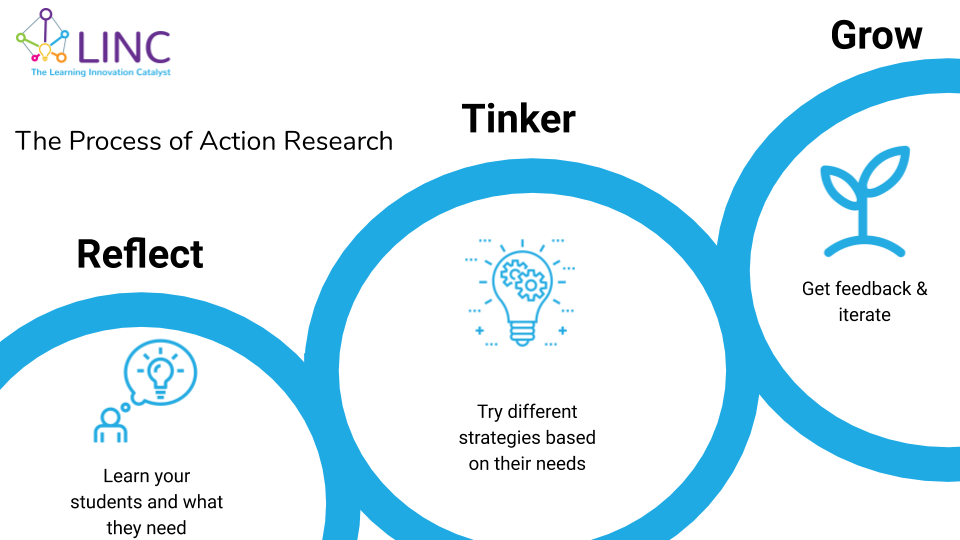Overcoming Initiative Overload: How to become an Action Researcher (Part 2)
 I was sitting with a teacher engaged in a three-way dueling initiative war between project-based learning, equity, and blended learning. The teacher was supposed to integrate a tech tool into a lesson, try to do a project, and simultaneously ensure that the classroom was somehow equitable. In earnest, the teacher decided to use Kahoot for tech, came up with a project for the students to do, and then tried to do the best she could to give a “hey” to the students who were simply not engaged.
I was sitting with a teacher engaged in a three-way dueling initiative war between project-based learning, equity, and blended learning. The teacher was supposed to integrate a tech tool into a lesson, try to do a project, and simultaneously ensure that the classroom was somehow equitable. In earnest, the teacher decided to use Kahoot for tech, came up with a project for the students to do, and then tried to do the best she could to give a “hey” to the students who were simply not engaged.
Essentially, the classroom became a hodge-podge of strategies and attempts for the teacher to be initiative compliant but it lacked a coherent instructional approach to engage students and meet all of their needs. The teacher knew that something was missing but couldn’t quite put her finger on it. After all, she was in fact “doing” all the important things.
I asked the teacher to reflect on her experience through the lens of her students’ learning needs.
Let’s take another look at what happened in this classroom. This was a teacher that was so focused on applying strategies, that she didn’t think about the actual needs of the learners. This is the plight of the overwhelmed, initiative-laden teacher.
Q: Did the students like the project?
A: Well, I guess some were ok with it.
Q: Were you able to reach students that are harder to reach?
A: Not really.
Q: Did you find that the students enjoyed being on technology?
A: I think they enjoyed that.
Q: Do you feel like they met their learning goals for the day?
A: Not really.
In part 1, we discussed the mindset of the pedagogical problem solver. If this teacher had seen herself as a pedagogical problem solver, her approach would have been reversed. Instead of starting with strategy, she would have started with her students.
- What do I need to learn about my students?
- What do my students need?
- What are their interests?
- What kind of instruction do they respond to?
- How can I best support each student in learning this standard?
Based on her reflections, she could then identify the appropriate strategies, projects, and effective technology tools. The pedagogical problem solver employs a range of strategies at different times based upon the students’ needs.
So how does a teacher become a pedagogical problem solver? It starts with action research. At LINC, we believe that teachers are at their best when they are continuously engaged in action research in their classrooms. Our action research process is:
- Reflect - Find students in your class that perplex you. Reflect on when this tends to happen and where they experience challenges. Seek opportunities to engage with them to learn who they are, what works, and what doesn’t in learning. Actually research your students and reflect upon what may need to shift.
- Tinker - Try things in your practice based on what you’ve learned from your students. As you try different things, know that some may work and most may not. This practice too becomes part of your research. Consider involving your students in planning for a new strategy to increase engagement.
- Grow - Make adjustments, seeking feedback from students. Continue to check-in and gauge the efficacy of your strategies. This is not beholden to a specific initiative as much as it is driven by the student’s needs.
Research and action are constants. At every phase, the teacher is researching and acting based on the needs of the learner. There is rarely a right answer or even a right strategy - there is just learning. The most amazing part of this process is that it naturally draws students more into the role of agents and active participants in their learning. They begin to see that their presence and voice actually matter. This is when a classroom becomes generative. This is what creates meaningful change in classrooms. This is what we’re doing at LINC.
